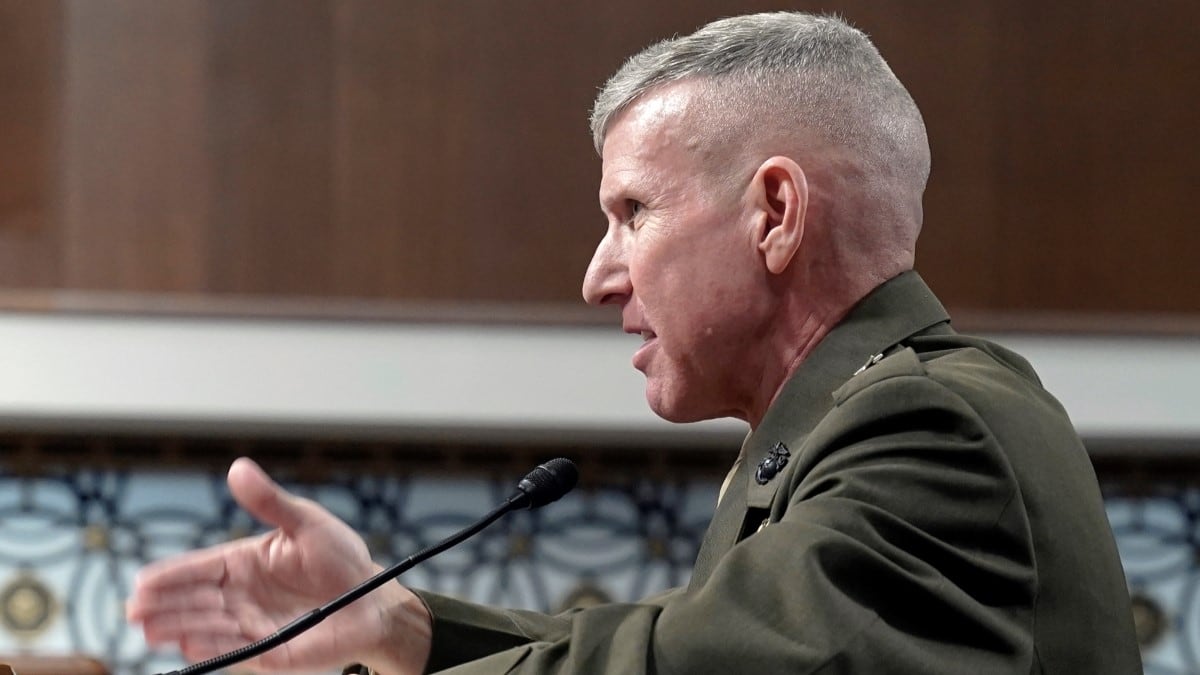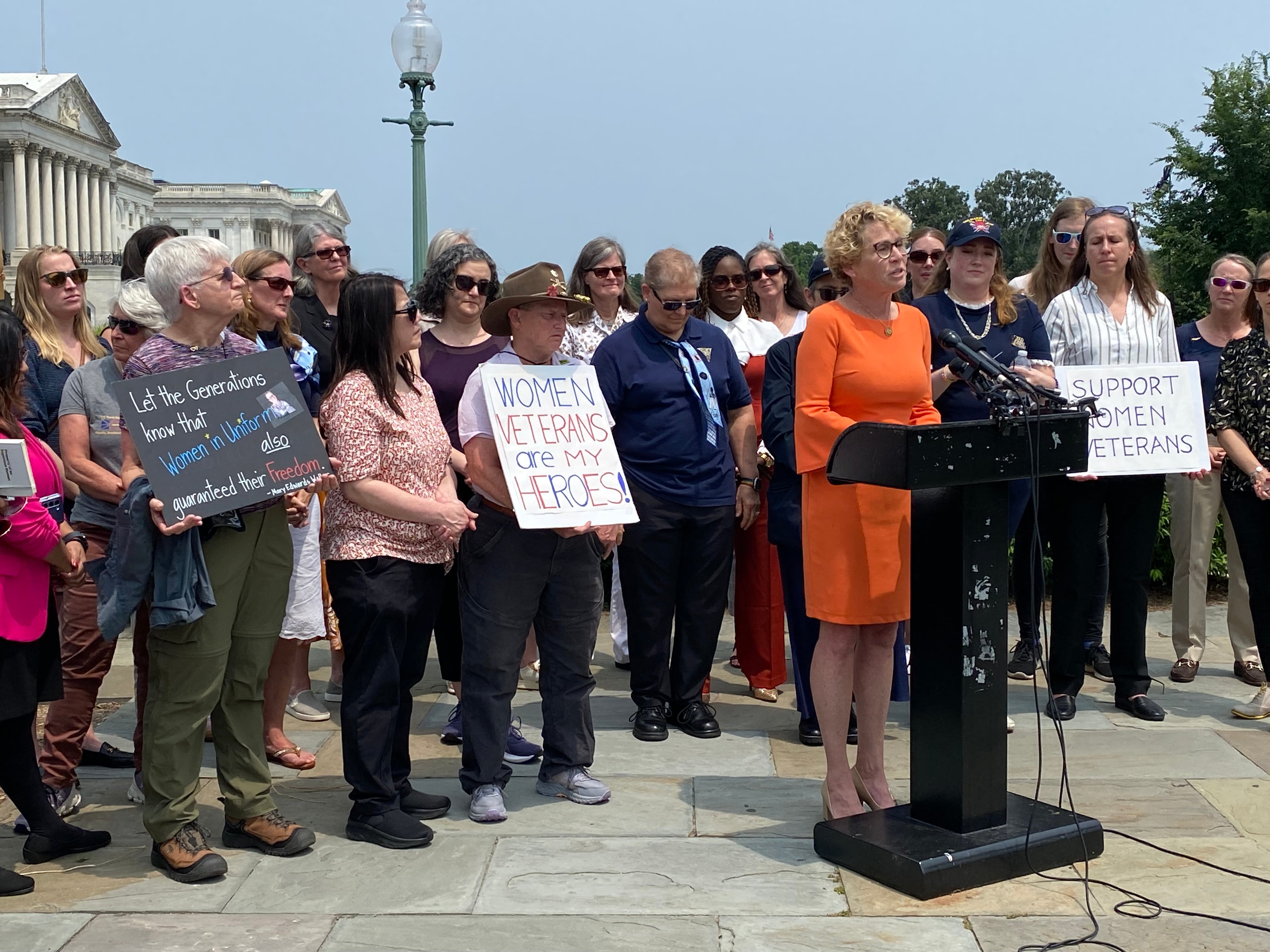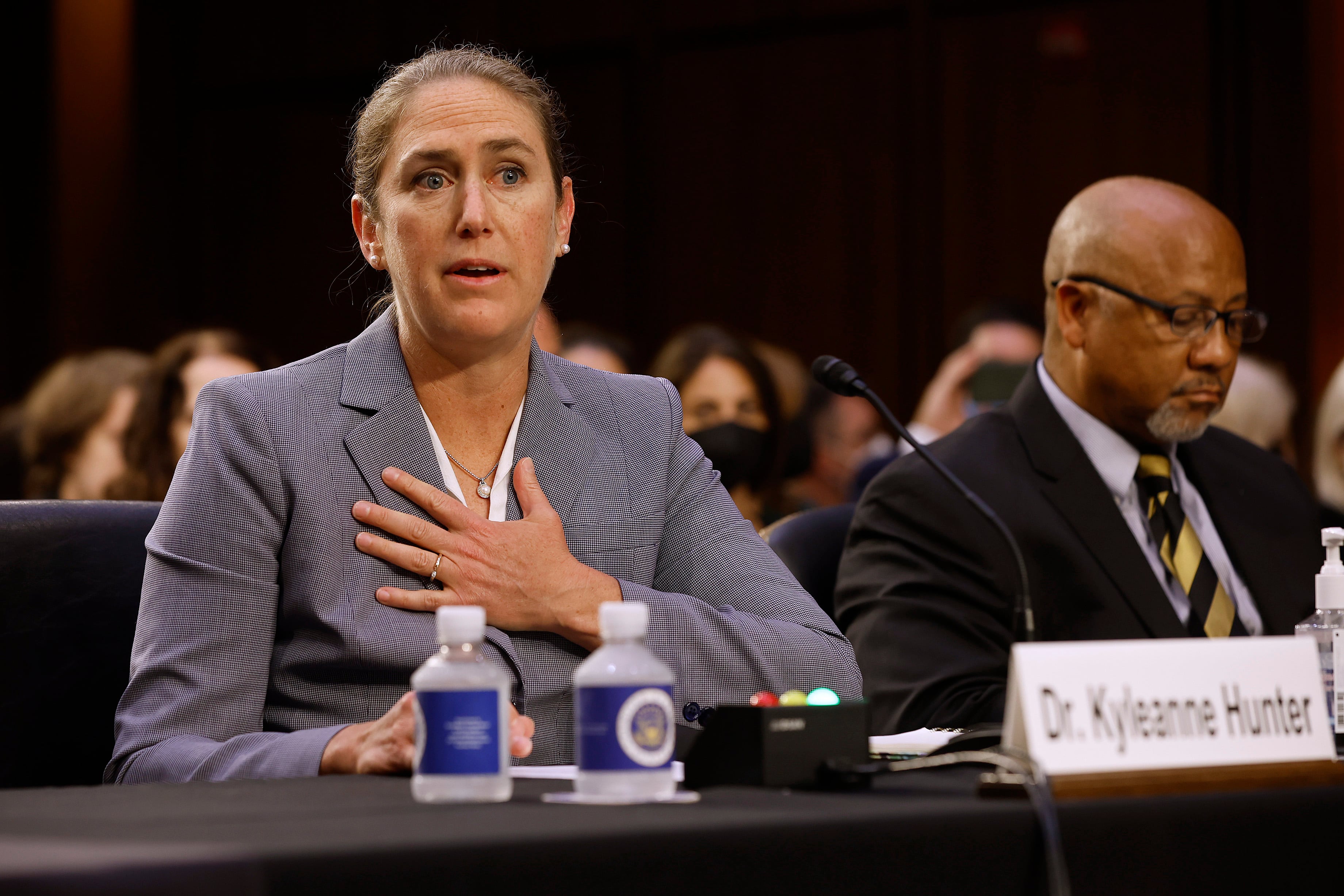In 2020, Marine Commandant Gen. David Berger unveiled Force Design 2030, his plan for getting his service ready for tough conflicts of the future.
The ambitious initiative has involved getting rid of tanks, cutting some artillery, and preparing Marines to fight in distributed groups equipped with new technologies.
Force Design 2030 has redefined the Corps’ trajectory in the first years of the decade. It has touched aspects of the service ranging from ammunition weight to combat medical care to swim training. It has kicked up controversy among some retired Marine leaders, who have lobbied against the changes.
And now, it’s called something slightly different.
“We’re kind of getting away from the ‘2030′ moniker,” Gen. Christopher Mahoney, the assistant commandant, said at a Hudson Institute event in Washington on Thursday.
The Corps’ leaders have started referring to the plan formerly known as Force Design 2030 as simply “Force Design.”
“I just say ‘Force Design’ because I don’t want to say 2031 next year, and 2032,” Commandant Gen. Eric Smith said Oct. 27, 2023, at the Military Reporters & Editors conference in Washington, two days before he experienced a cardiac arrest that has left him out of office while he recovers.
Smith also prefers to drop the “2030″ from the related initiatives Talent Management 2030 and Training and Education 2030, according to his spokesman, Maj. Joshua Larson.
Smith is still committed to the Force Design concept, Larson said in an emailed statement to Marine Corps Times on Monday.
“He has made it clear that our modernization is a journey, continually refined through a campaign of learning that is informed through Fleet Marine Force experimentation and exercises,” Larson said. “He feels the moniker ‘2030′ makes it sound like there’s an end point, and no longer uses it for the three original pillars of our modernization.”
RELATED

Installations and Logistics 2030, the newest of the service’s modernization plans, is also shedding the “2030,” according to Larson.
“Force Design 2030″ remains in wide use, with the term appearing Monday both in a commentary piece on War on the Rocks and in a satirical article on Duffel Blog.
The Marine Corps removed the “2030″ from the title of its web page about its modernization initiatives sometime between Oct. 12 and Oct. 31, according to versions archived by the Wayback Machine. Smith officially became commandant in September, after leading the service in an acting capacity for the two months following Berger’s retirement.
One initiative that will retain the “2030″ designation, according to Smith, is Barracks 2030, the not-yet-released plan for overhauling the living quarters for junior enlisted Marines.
In the near term, the Corps will put civilians in charge of managing barracks, and replace broken locks and outdated furniture, Sergeant Major of the Marine Corps Carlos Ruiz said in written congressional testimony Wednesday. Longer-term fixes will include renovations focused in part on combating sweltering heat and mold.
“Get it done, 2030,” Smith said in October 2023 of the barracks plan. “That’s to put pressure on me and my team to get that done on behalf of the lance corporals.”
Irene Loewenson is a staff reporter for Marine Corps Times. She joined Military Times as an editorial fellow in August 2022. She is a graduate of Williams College, where she was the editor-in-chief of the student newspaper.





